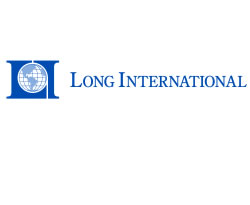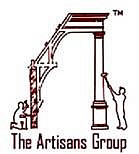ABSTRACT - This paper provides guidelines to commercial construction cost engineers for the development of a plan for obtaining and utilizing subcontractor cost information for use in bidding, procurement, scheduling, change order management, and claim management. The paper is based upon personal field experience gained in cost engineering, scheduling, bidding, planning, contracting, and claim analyses. The paper is unique in that it discusses the utilization of subcontractors cost information from the beginning of estimate planning to bidding, and award of work, and continuing through the review and approval of costs for changes. The paper presents specific information for the application of best practices and recommended guidelines for use by contractors, cost engineers, and consultants. Implementation of the recommended guidelines can enhance cost engineering through the practical relationship of estimating, procurement, scheduling, cost claims, and historical cost data to improve cost control throughout the various phases of the construction process.
INTRODUCTION
Cost and schedule control require cost engineers to have detailed knowledge and experience in the area of subcontractor construction cost evaluation. Subsequently the cost engineer will likely need a variety of resources for information that can be utilized to substantiate the basis and reasonableness of subcontractor cost data for use in various arenas of cost engineering. This paper provides general guidelines to commercial construction cost engineers for the development of a plan for obtaining and utilizing subcontractor cost information for use in bidding, procurement, scheduling, change order management, and claim management.
A discussion of the utilization of subcontractor's cost information from the beginning of estimate planning, bidding, and award of work, and continuing through the review and approval of costs for changes, and for the evaluation of potential additional cost claims is provided herein. The paper presents specific information that should be considered for the application of best practices and guidelines for use by contractors, cost engineers, and consultants.
The skills of any cost engineer can be enhanced by the practical utilization of subcontractor cost data throughout the various stages of project estimating, procurement, scheduling, cost claim preparation or evaluation, and maintaining historical cost information. Application of the procedures, methods, and information discussed herein should enable the cost engineer to achieve further knowledge and success through improved cost control throughout the various phases of the construction process.
In the area of commercial construction, cost engineers are involved with different responsibilities regarding the use of subcontractor cost data. The subcontractor firm itself will more than likely be engaged in estimating potential project costs, and ongoing project change orders. General contractor cost engineers often will be the recipient of proposal pricing from subcontractors as well as proposed change order pricing. Consultants are often utilized in the analysis of proposal cost and change order cost for the benefit of owners, contractors, subcontractors and other stakeholders requiring review, oversight, or analysis. Analysis of cost is required during the various phases of pre-construction, ongoing construction, and post construction activities. Forensic activities such as claims analysis for delay, disruption, impact or claims support are also areas requiring analysis of cost.
SUBCONTRACTOR COST DATA
Firms that are regularly engaged in the business of working as a subcontractor to provide services range from the very small company to the mega-corporation. Subsequently, the methods of estimating, maintaining historical cost information, and preparing change orders vary widely among these subcontractors. The cost engineer, however, will benefit from a complete understanding of the components of cost and the compiling of a historical database of actual cost for use with future estimates and change orders. The components of construction cost can be generally considered as labor cost, material cost, equipment cost, general project requirement cost, and overhead and profit cost.
As with any process, a plan must be developed to implement a historical cost database program. Obtaining cost data typically requires upper management to approve the plan for obtaining and compiling cost data and direct the implementation of the plan. Follow up inspection is also required to ensure proper documentation and gathering of information.
The plan should typically include identifying the following:
- Create a data collection plan with emphasis on collecting current and relevant
cost and risk data
- Establish parameters for the data that is to be gathered
- Identify the specific project types and conditions that should be used for tracking and establishing adjustment factors
- Investigate and identify data sources
- Establish a structure and coding system for the data
- Define the requirements of the person recording the raw data
- Determine the forms to be used in gathering the data
- Evaluate the use of technology in the process
- Determine the means and methods of cataloging the data
- Establish when and how the data is to be updated
- Collect data and standardize the identification of cost impact factors
- Baseline the data for benchmarking by adjustments and other impact factors Analyze the data for cost drivers, trends, and outliers
- Compare results against rules of thumb and standard factors derived from historical data
- Interview data sources and document all pertinent information
- Store data for future use
Developing the database requires a practical approach to defining the parameters for the activities and components of construction that are to be tracked for labor and material cost data. The parameter chosen is typically defined as the identification of significant activities and components that are readily measurable and characterize the system or variable to be measured. Each item, activity, or component must be then defined in a unit of measurable quantity that can be related to labor and material cost. The cost must then be identified. Whether cost data is obtained from selfperformed work in place or other sources such as actual bids, cost guides, or projects built by others, it is important to be clear about what the costs include and do not include. If the data is obtained from self-performed work, then the task of defining cost in most cases should be fairly straight forward. In general terms, actual construction cost can be separated into the following categories:
- Direct field labor cost
- Indirect labor cost: labor taxes, health and welfare, workman's compensation, FUI, SUI, FICA, and other direct payroll costs such as dues, insurances, profit sharing, etc.
- Direct consumed material cost
- Direct small tools cost
- Direct cost of material installed as required by the contract documents for
construction
- Indirect onsite overhead and cost of operations such as requirements needed for: general contingencies, bonding, insurance, permits, fees, management personnel, site office, material storage, material protection, personnel access, communication, security, hoisting, scaffolding, weather protection, quality control, life safety, survey, transportation, utilities, inspection, testing, design, etc.
- Indirect general office overhead cost including requirements for the ongoing and continued operations of the company such as: upper management personnel, administrative, legal, marketing, financing, association, research, planning, development, etc.
- Profit
There are a number of existing established cost management software systems and structures that have already identified the parameters of cost breakdown for measurement and identification of items and components of work on which data can be compiled. Many of the systems available for use provide industry wide statistical production rates as well as the identification of components that define what costs are included for each item to be installed and thus provide general guidelines for information to be gathered when developing a cost database plan. Some of the software resources available include:
. . .Continue to read rest of article (PDF).











